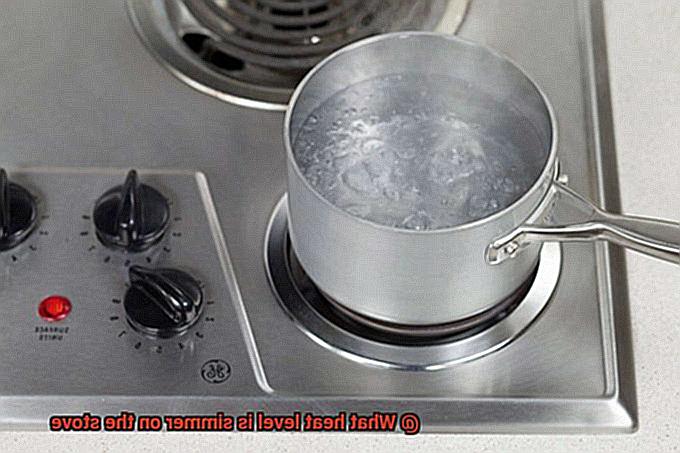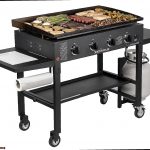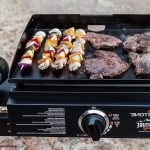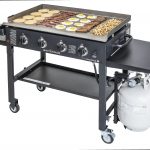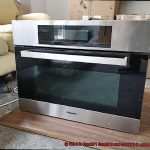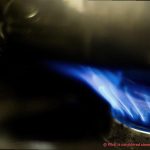Are you a foodie who loves to cook up a storm in the kitchen? If so, you’ve probably come across the term “simmer” in many recipes. But what exactly does it mean to simmer on the stove? Is it like boiling, or is it more like a gentle caress of heat?
Simmering is a cooking technique that involves slow and steady heating of food over low heat until it reaches a temperature just below boiling. This process helps to develop rich and complex flavors in soups, stews, and sauces. However, getting the right heat level for simmering can be tricky.
So what heat level is simmer on the stove? Unfortunately, there’s no one-size-fits-all answer. The ideal temperature for simmering varies depending on the recipe and ingredients used. But don’t worry – we’ve got you covered. In this blog post, we’ll explore everything you need to know about simmering – from its benefits to different ways you can achieve the perfect simmer on your stove.
Whether you’re a novice cook or an experienced chef, mastering the art of simmering will take your culinary skills to new heights. So grab your apron and let’s get started.
Contents
Factors that Affect Simmering Heat Level
Simmering, a cooking technique that requires heating food to just below boiling point, is a delicate art that can make or break a dish. Achieving the perfect simmer requires attention to detail and an understanding of the various factors that can affect heat level. In this blog post, we will explore the different factors that affect simmering heat level and provide tips on how you can achieve the perfect simmer every time.
The type of cookware being used is one of the most important factors that affect simmering heat level. Different materials conduct heat differently, and some may require higher or lower heat settings to achieve a simmer. Copper and aluminum cookware conduct heat well and may require lower heat settings compared to stainless steel or cast iron. So, choose your cookware wisely based on what you’re cooking.
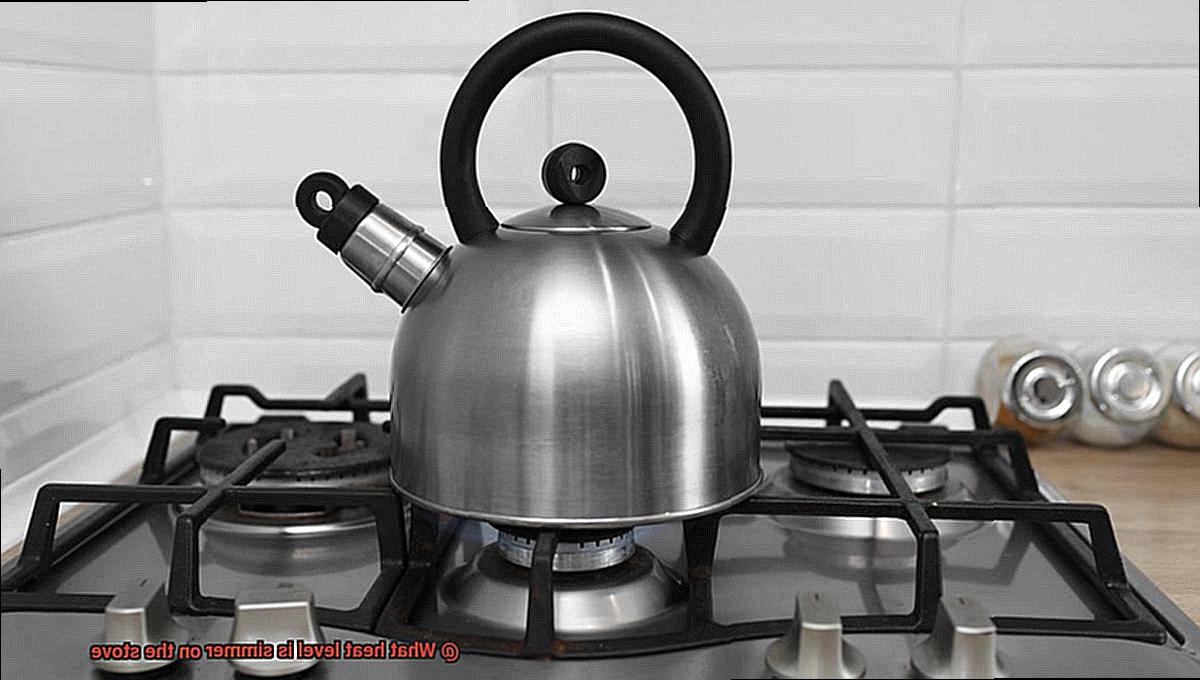
The size and shape of the pot or pan can also affect the simmering heat level. A wider pot or pan will have a larger surface area which can lead to faster evaporation and require a lower heat setting for simmering. In contrast, a narrower pot or pan may require a higher heat setting to maintain a simmer. Therefore, it is important to choose the right size pot or pan based on the amount of food you are cooking.
The type of stove being used can also affect the simmering heat level. Gas stoves tend to be more responsive to temperature changes and may require lower heat settings for simmering compared to electric stoves. Induction cooktops also offer precise temperature control and may be ideal for simmering delicate foods, so keep your stove’s capabilities in mind when simmering.
The amount of liquid in the pot or pan also plays a critical role in determining the simmering heat level. A larger amount of liquid will retain more heat and may require a higher heat setting for simmering, while a smaller amount of liquid may require a lower heat setting. Therefore, it is essential to determine the right amount of liquid based on the type of food you are cooking.
Lastly, altitude can also affect the simmering heat level. At higher altitudes, water boils at a lower temperature due to decreased atmospheric pressure. This means that the simmering temperature for foods will be lower at higher altitudes. Therefore, if you are cooking at a high altitude, you may need to adjust your heat level accordingly.
What is the Ideal Temperature for Simmering?
Simmering is a gentle cooking technique that allows your food to cook evenly and retain its natural flavors. It’s an art that requires precision, and the first step to getting it right is understanding the ideal temperature range.
The sweet spot for simmering on the stove is between 180°F (82°C) and 205°F (96°C). This low heat setting produces small bubbles in the liquid, allowing your food to cook gently without overcooking or burning. However, it’s important to note that the exact temperature may vary depending on the recipe and type of food you’re cooking.
To ensure you get it right every time, use a thermometer to check the temperature of the liquid. Different stovetops may have slightly different temperature settings, so it’s best to rely on your thermometer to maintain a consistent simmer. This will help your food cook evenly without being under or overcooked.
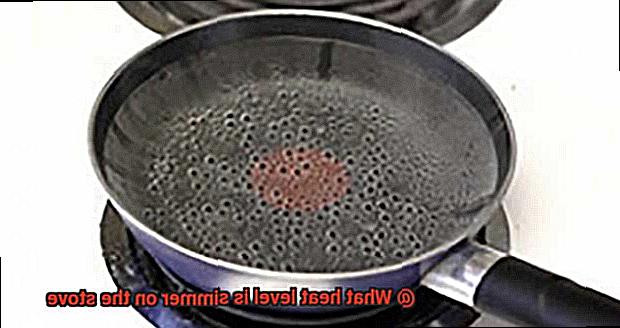
Altitude is another factor that can affect the ideal temperature for simmering. At higher altitudes, water boils at a lower temperature due to the decrease in atmospheric pressure. This means you may need to adjust your simmering temperature accordingly to ensure your food cooks properly.
In addition to temperature, other factors like cookware, pot size, stove type, liquid amount, and altitude can affect heat level. Pay attention to these details like a conductor leading an orchestra to create a harmonious symphony of flavors.
How to Achieve a Simmer on Your Stove
Achieving the perfect simmer can be a tricky process, but by following these tips and techniques, you can master this essential cooking skill and create delicious meals with ease.
Understand what a simmer is:
Simmering is a cooking technique that involves heating food to just below boiling point and maintaining that temperature for an extended period. This results in delicately cooked food that retains its flavors and nutrients. The ideal temperature for simmering is between 180°F to 205°F (82°C to 96°C), which is hot enough to cook the food, but not hot enough to boil it.
Adjust your heat level:
To achieve a perfect simmer, you need to set your stove burner to a low heat setting. Most stoves have a range of heat settings that you can adjust to achieve the desired temperature. Start by turning the burner to the lowest heat setting and then gradually increase the heat until you reach the desired temperature. Be patient and adjust the heat level as necessary throughout the cooking process.
Use the right size and shape of pot or pan:
The size and shape of your pot or pan can also affect the simmering process. A wide, shallow pot or pan will allow more heat to escape, making it difficult to maintain a consistent simmer. On the other hand, a tall, narrow pot or pan will trap more heat, making it easier to maintain a simmer. Choose a pot or pan that is appropriate for the amount of food you are cooking, and make sure it’s deep enough to allow for adequate liquid coverage.
Stir regularly:
Stirring your food regularly while it’s simmering will help distribute the heat evenly and prevent it from sticking to the bottom of the pot or pan. This will ensure that all parts of your dish are cooked evenly and prevent any unwanted burning or sticking.
Monitor your liquid:
It’s essential to keep an eye on your liquid while it’s simmering. If you notice that your food is boiling instead of simmering, lower the heat and adjust the size and shape of your pot or pan accordingly. If the liquid level becomes too low, add more liquid to avoid burning your food.
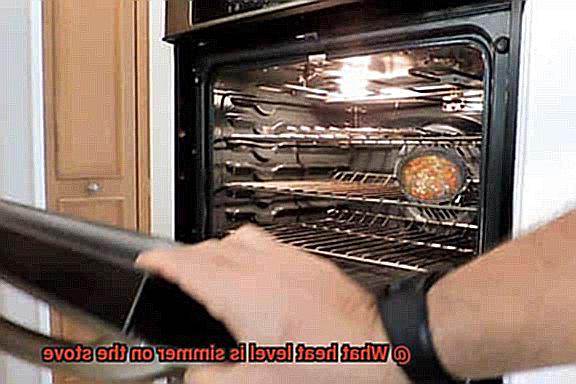
Use a lid:
Using a lid on your pot or pan can help maintain a consistent simmer. This will trap in heat and prevent evaporation, allowing your food to cook evenly and retain its flavor.
The Dangers of Boiling Instead of Simmering
It’s a crucial cooking technique that can elevate your dish to new heights. However, many novice cooks make the mistake of boiling instead of simmering, which can lead to a plethora of dangers in the kitchen.
To understand the risks of boiling, we must first understand the difference between boiling and simmering. Boiling occurs when water or liquid reaches 212°F (100°C) and creates large bubbles, while simmering occurs at around 185°F (85°C) and creates small bubbles.
The first danger of boiling instead of simmering is overcooked or burnt food. When ingredients are boiled instead of simmered, they lose their texture, flavor, and nutrients. This is especially true for delicate foods like vegetables, pasta, and eggs.
The second danger is evaporated liquid, resulting in a dry and thick sauce or soup. Leaving the lid off the pot during cooking allows steam to escape and reduces the amount of liquid in the pot. So keep that lid on tight and let your food simmer away.
The third danger is splatters and burns. When liquids boil vigorously, they can splash out of the pot and onto the stove or cook. Not only is this messy and frustrating to clean up later, but it can also cause serious burns that require medical attention.
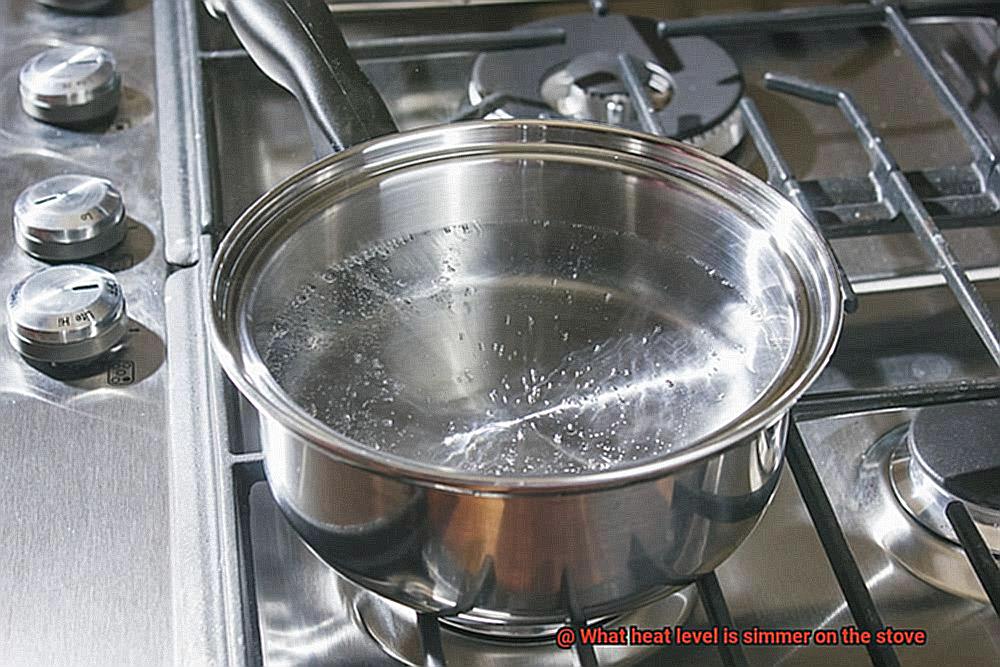
Lastly, boiling is wasteful in terms of energy and time. It requires more heat and energy to maintain a rolling boil than a gentle simmer. This means that boiling can increase your energy bills and prolong your cooking time unnecessarily.
In summary, it’s vital to understand the difference between boiling and simmering to make your dish stand out. Simmering is a safer, more efficient, and effective way to cook most ingredients while boiling should only be used for certain dishes like soups or stews that require a rapid boil.
Adjusting the Heat Level to Maintain a Simmer
Nothing beats the rich flavors and textures that simmered dishes bring to our tables. But, achieving the perfect simmer can be a daunting task. Fear not, as I will guide you through the essential steps to adjust the heat level on your stove to maintain a simmer like a pro.
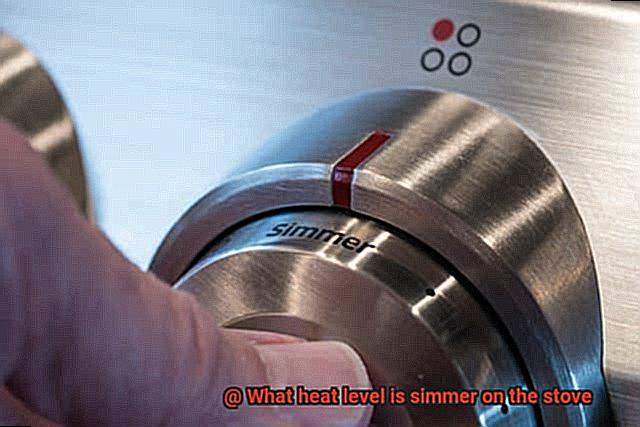
First and foremost, determining the ideal temperature for your recipe is crucial. Simmering typically requires a low, steady temperature between 180°F to 205°F (82°C to 96°C). However, this temperature range can vary depending on the recipe’s requirements and the type of pot or pan used. A thicker pot or pan may require a slightly higher temperature to achieve the desired simmer.
Once you have identified the ideal temperature range, it’s time to adjust the heat level on your stove. Most stovetops come with several heat settings ranging from low to high. To maintain a gentle simmer, you will need to set your stove to a low or medium-low heat setting. Remember, simmering is not boiling. Boiling occurs at a much higher temperature and requires a different heat level altogether. So keep an eye on the heat level and adjust it accordingly.
But wait, there’s more. You can take your simmering game up a notch by using a diffuser or flame tamer. These devices help distribute heat evenly and prevent hot spots from forming in your pot or pan. This ensures that your food is cooked gently and evenly every time.
Tips for Successfully Simmering Foods
Simmering is a cooking technique that requires a delicate touch and careful attention to detail. It involves cooking food slowly in liquid at a temperature just below boiling point, allowing the flavors to meld together and develop over time. Here are some tips for successfully simmering foods:
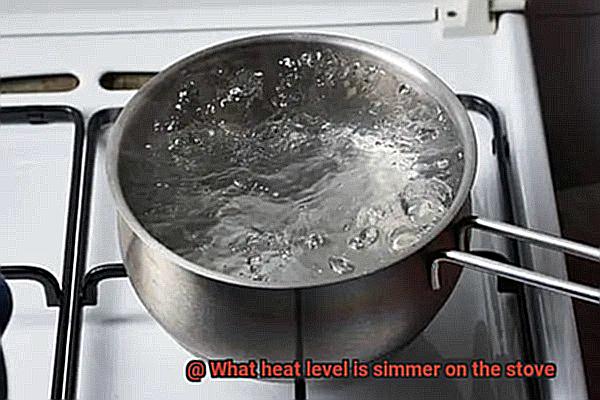
Choose the Right Pot for Simmering
The right pot is essential for successful simmering. A heavy-bottomed pot with a tight-fitting lid helps to distribute heat evenly and prevent the liquid from evaporating too quickly. It’s important to choose a pot that is large enough to hold all the ingredients with some space left for stirring. Overcrowding the pot can make it difficult for the food to cook evenly.
Use the Right Amount of Liquid
Using the right amount of liquid is crucial for successful simmering. The liquid should cover the food being cooked by about an inch or two, depending on the recipe. Using too much liquid can lead to a watery dish, while using too little can cause the food to burn or stick to the pot.
Keep an Eye on Temperature
Simmering should be done at a low heat setting, usually between 180°F and 200°F. Keeping an eye on the temperature is crucial since going beyond this range could result in the liquid boiling, which is not what we want when simmering. If the heat is too high, it can cause the liquid to boil rapidly and overcook the food. If the heat is too low, it can cause the food to cook too slowly and unevenly.
Stir Carefully and Gently
Stirring is important when simmering since it helps to distribute heat evenly and prevent the food from sticking to the bottom of the pot. However, it is important not to stir too frequently as this can break apart delicate foods like fish or vegetables. Use a wooden spoon or spatula to stir gently and avoid breaking apart any delicate ingredients.
Adjust Seasoning Towards the End of Cooking
Simmering can cause flavors to concentrate, so adding salt or other seasonings early on can lead to an overly salty or seasoned dish. By adding seasonings towards the end, you can better control the flavor of your dish. It’s important to taste your dish as it simmers and adjust the seasoning as needed towards the end of cooking.
Common Mistakes When Trying to Simmer Foods
Simmering is a beloved cooking technique that produces flavorful and tender dishes, but there are common mistakes that can ruin your efforts. As an expert in the field, I’m here to share with you some of the most frequent errors people make when trying to simmer foods on the stove.
Firstly, one of the most significant mistakes is not adjusting the heat properly once the food has reached a simmer. Many people assume that once the food starts to bubble, they can leave it unattended on the same heat level. However, this is not the case. The temperature of the food can continue to rise if left unattended, leading to overcooking or even burning. Avoid this mistake by keeping an eye on the temperature and adjusting it as needed to ensure perfectly cooked food every time.
Secondly, using a lid is essential when simmering foods. The lid traps in heat and moisture, which is necessary for properly cooking certain types of food. However, using too small of a pot with a lid can lead to steam escaping and not allowing the liquid to reduce properly. Choose a pot that is appropriate for the amount of food you’re cooking and one that has a tight-fitting lid.
Thirdly, stirring is important but too much stirring can actually break down delicate ingredients and cause them to lose their texture or flavor. Stir gently and only when needed to ensure even cooking and prevent sticking.
Lastly, monitoring your food closely while simmering is key. Keeping an eye on the dish will allow you to adjust the heat as needed to prevent overcooking or undercooking. It also gives you the chance to add any necessary seasonings or ingredients at the appropriate time.
To summarize, here’s a quick checklist of what to avoid when simmering foods:
- Don’t leave your dish unattended once it reaches a simmer – adjust the heat as needed.
- Use an appropriately sized pot with a tight-fitting lid.
- Stir gently and only when needed.
- Keep a close eye on your food and adjust the heat as needed.
yij7fPSezS0″ >
Conclusion
In conclusion, simmering is an essential cooking technique that can elevate the flavors of your dishes to new heights. It involves gently heating food over low heat until it reaches a temperature just below boiling, allowing for a slow infusion of flavors and tenderizing tough cuts of meat.
However, achieving the perfect simmer can be a challenge, as several factors come into play. The type of cookware used, size and shape of the pot or pan, type of stove being used, amount of liquid in the pot or pan, and even altitude can all impact the heat level required for simmering.
To achieve a perfect simmer, you need to set your stove burner to a low heat setting. Most stoves have a range of heat settings that you can adjust to achieve the desired temperature. But don’t stop there. Simmering requires precision and attention to detail. Choosing the right pot for simmering, using the right amount of liquid, stirring carefully and gently, adjusting seasoning towards the end of cooking are some tips for successfully simmering foods.
On the other hand, common mistakes such as leaving your dish unattended once it reaches a simmer or using an inappropriate sized pot with a loose-fitting lid should be avoided at all costs. Stirring too much or not enough and not monitoring your food closely while simmering are also recipe-ruining errors.
By following these tips and techniques, you’ll master this essential cooking skill in no time.

